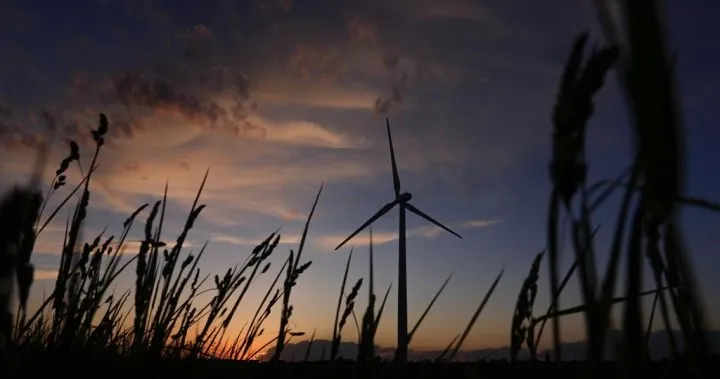
British Columbia Launches Ambitious Wind Power Initiative to Rival Site C Dam’s Output!
2024-12-09
Author: Olivia
Introduction
In a groundbreaking announcement on Monday, British Columbia unveiled a monumental investment in wind energy that promises to equal the electricity generation of the Site C dam by the early 2030s. This ambitious initiative was revealed during a press conference led by Premier David Eby, alongside key ministers and BC Hydro’s executives.
Economic and Environmental Benefits
Premier Eby emphasized the far-reaching benefits of the wind projects, which are expected to generate significant job opportunities, attract billions in private investment, and deliver affordable electricity. Moreover, the projects aim to enhance economic prospects for First Nations communities and contribute to B.C.'s climate action goals while diversifying the province’s energy portfolio.
“This initiative is a massive win for British Columbia,” Eby exclaimed, highlighting a unique opportunity as other major regions pull back on clean energy investments.
Response to Clean Power Proposals
Following a call for clean power proposals issued by BC Hydro in April—seeking 3,000 gigawatt hours of new electricity annually—it was revealed that the response exceeded expectations. Energy and Climate Solutions Minister Adrian Dix announced that the province received proposals threefold the original request, ultimately signing 30-year agreements with nine wind projects that will yield 5,000 gigawatt hours, enough energy to power approximately half a million homes.
Financial and Employment Impact
Dix clarified, “This boost represents an 8% increase in our power supply, matching the contribution expected from Site C.” Financially, these projects are estimated to involve capital spending between $5 and $6 billion and create around 2,000 construction jobs every year.
Electricity Pricing and First Nations Equity
The pricing for the electricity generated is expected to be around 40% lower compared to the last significant power call back in 2010. The proposals not only surpassed the provincial requirement of a minimum of 25% First Nations equity, but they took it to another level. Eight of the nine proposed projects boast 51% ownership by First Nations, indicating an approximate $3 billion contribution to Indigenous equity.
Geographic Distribution of Projects
Geographically, the projects will be spread throughout the province: four will be located in northern B.C., two in the Southern Interior, and one on Vancouver Island.
Environmental Assessment Exemption
In a move aimed at accelerating the construction timeline, the B.C. government plans to exempt these and future wind projects from the environmental assessment process. Environment Minister Tamara Davidson assured that this exemption would be implemented while keeping stringent environmental permit processes intact and ensuring First Nations have an active partnership role in the development.
Criticism of the Initiative
However, this decision sparked criticism. BC Conservative Leader John Rustad condemned the move, calling for a more thorough understanding of the environmental impacts of these projects. He added that wind power, perceived as inconsistent and costly, should not dominate B.C.’s future energy mix.
Growing Electricity Demand
As electricity demand in British Columbia is projected to surge by 15% by 2030—driven by population growth and a shift towards electrification—the province is under increasing pressure to secure its energy needs. Recent droughts have exacerbated this challenge, forcing BC Hydro to import about 25% of its electricity over the past year.
Conclusion
The comprehensive plan aims to have operational wind projects in place by 2031, with BC Hydro indicating a commitment to conduct similar calls for power proposals every two years based on evolving demand.
This major wind power initiative not only underscores British Columbia’s commitment to renewable energy but also positions the province at the forefront of a new clean energy era. Will this ambitious strategy transform the regional energy landscape forever? Stay tuned!









 Brasil (PT)
Brasil (PT)
 Canada (EN)
Canada (EN)
 Chile (ES)
Chile (ES)
 España (ES)
España (ES)
 France (FR)
France (FR)
 Hong Kong (EN)
Hong Kong (EN)
 Italia (IT)
Italia (IT)
 日本 (JA)
日本 (JA)
 Magyarország (HU)
Magyarország (HU)
 Norge (NO)
Norge (NO)
 Polska (PL)
Polska (PL)
 Schweiz (DE)
Schweiz (DE)
 Singapore (EN)
Singapore (EN)
 Sverige (SV)
Sverige (SV)
 Suomi (FI)
Suomi (FI)
 Türkiye (TR)
Türkiye (TR)